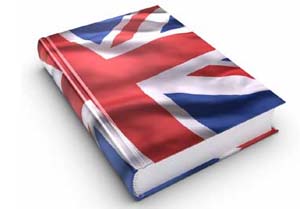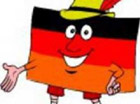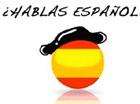 |
|
 |
|
| Visite: 1412 | Gradito: |
Leggi anche appunti:The reformation and counter-reformationTHE REFORMATION AND COUNTER-REFORMATION Background At the beginning of the Charles dickensCHARLES DICKENS REALISM Dickens is defined as a realistic novelist, Integrated CircuitsIntegrated Circuits The first integrated circuits (IC) appeared toward |
 |
 |
The Elizabethan Age
The Tudors
The dynasty began with the Lancastrian Henry Tudor.He defeated King Richard III at the battle of Bosworth Field in 1485 ending the War of the Roses between Yorkists and Lancastrians. There were other claimants to the throne such Elizabeth of York, John II of Portugal and John De La Pole. It was the victory at Bosworth Field that brought him the throne, with the name of Henry VII.
His monarchy was considered supreme; in fact Britain became a very powerful and strong state. Especially in foreign policy it had a very strong power; trade agreements were made with Flanders and Denmark.
He imposed very heavy taxes and confiscated the lands of the nobles.
Britain became very rich during his reign.
In 1509 Henry VII died leaving a very strong and safe crown to his eleven years old son Henry VIII. He was a cruel man and he spent all his father' s money fighting wars against France. He enjoyed deer hunting, archery and hawking in the royal forest. He was a big lover of music and never went anywhere without harpists and trumpeters.
He was married to Catherine of Aragon. He wanted to divorce from her but the Pope didn' t agree. So Henry broke away from the catholic Church, and, at the suggestion of Thomas Cromwell, set up is own Protestant Church. (Act of Supremacy -1534)
Henry dissolved the monastic communities and gave much of their property to the nobles in exchange of their support.
When Henry VIII came to the power he embarked on a programme of ship building in order to fight with France.One of Henry' s finest ships was the "Mary Rose".
Henry VIII had six wives in his attempt to have a son to inherit his throne of
England.
Henry' s six wives were:
Henry' s only son was Edward. Edward was only nine years old when his father died and he became King, with the name of Edward VI. He was called "The Boy King".
Edward' s uncle, the Duke of Somerset and later the Duke of Northumberland ruled England in his name.
He was Protestant and he introduced Protestant reforms, for example he wrote the "Book of Common Prayer in English" to replace the latin missal.
He confiscated the lands of the convents to built schools. These schools taught grammar, writing, reading, Latin, Greeks and Mathemathics.
Edward was never a healthy child and died in 1553 at the age of fifteen.
While Edward was still alive his ministers persuaded him to make a will naming Lady Jane Grey his successor to the throne. She was a Protestant and ruled for only 9 days before Mary, Henry VIII's eldest daughter had her arrested and executed. He was Queen for only 9 days; for this reason she's called "The Nine Days Queen".
Mary I succeeded her. She was the daughter of Henry VIII and Catherine of Aragon. She never forgave his father for divorcing her mother and ignoring her at the court. She wanted to return England to the "old" religion. She married Philip, the heir of the throne of Spain.
Mary was called "Bloody Mary".During her reign, she burned at the stake three hundred Protestants who refused to give up their religion. There was a rebellion, but it failed.
She died in 1558 and she had no children.
The prosperous Elizabethan Age began when Mary's sister Elizabeth became Queen after Mary' s death in 1558.Elizabeth was Anne Boleyn' s daughter. Queen Elizabeth I was an intelligent and determined woman. In 1568 Queen Elizabeth' s cousin, Mary Queen of Scots, fled to England after a rebellion of the Scottish Lords. Mary was Catholic and she started plotting against Elizabeth with the help of Philip II of Spain. Elizabeth condemned her at Fotheringhay Castle in 1587. Elizabeth was Protestant and she considered herself "Supreme Governor" and not "Supreme Head of the English Church" as her father did. She governed with a "Privy Council" of twenty members. These members were nobles or officials. She had a secretary of state. His name was William Cecil. She made often Royal Jouneys, to be closer to her people. For example, in August and September she travelled in procession around England in what was known as the Royal Progress.In foreign policy, she helped the Dutch in 1588 against the Spanish. King Philiph II of Spain sent the "Spanish Armada" to invade England. But England won magnificently the battle and the Spanish Armada returned to Spain.England was a commercial and seafaring power. Elizabeth encouraged the piracy .There were many english sea-captains like Drake, Raleigh and Hawkins. They often attacked the Spanish galleons and stole their treasures.Sir Walter Raleigh was the first to import tobacco, from the New World.London became the greatest city in Europe and was inhabitated by a quarter of a million .Trades such as glass and brick-making developped. Prosperity was also found in coal mines.
The Tudor period ended with the death of Elizabeth I on 24th March 1603 after 45 years on the throne. She had no children or husband to succeed her.
The Culture
In the Elizabethan Age there was a great achievement in the area of music and drama. Many Elizabethans made their own music. The favourite instruments were the lute, the viola and the bagpipe.
A popular form of entertainment was the ringing of church bells. Major towns had their official musicians, known as "Waits".
Dancing was also a popular activity performed by couples. It was considered a recreation of the mind and also an exercise for the body.
A major part of Elizabethan lifestyle were feasts and festivals. The greatest festival was held in Easter times. In the summer, bonfires were burnt and dances were held to celebrate Midsummer' s Eve on June 24th.
During this age, literature reached the very highest point of its development.
There are many factors that contributed to this development, but most of all it was due to the Queen' s character and her passion for the arts. In fact her court was magnificent and there were many poets, musicians and actors.
The Elizabethan Age is considered the Golden Age of poetry. There was a great development of drama, songs and sonnets.
The sonnet was a poem and it came from Italy. The first italian sonneteers were Dante and Petrarch. But English sonnets were different from italian sonnets. They were both composed by 14 lines of iambic pentameter. The Italian Sonnet was divided in 2 sections, and octet and a sestet. The octet presented a problem and the sested solved the situation.
The English sonnet was divided in 4 sections: 3 quatrains that presented a problem and a couple that solved the situation. The Rhyme schemes were different too.
The sonnets concerned with love. Especially with the desire of a lady who, for some problems, can' t return the poet' s love. The sonneteers celebrated all the qualities of the lady: moral and physical.
In the sonnets there were the conceits, too. They are poetic images.
The most important Elizabethan sonneteers were:
v George Gaiscogne;
v Sir Philiph Sidney, he wrote "Astrophel and Stella";
v Sir Walter Raleigh; he was an explorer and he wrote five sonnets;
v Edmund Spenser; he wrote "Amoretti"
v Michael Drayton;"Idea"
v John Davies;
v William Percy
v Thomas Wyatt.
Of course, the most celebrated of English sonneteers is William Shakespeare. He wrote 154 sonnets.
Theatre became very popular. In 1576 the first theatre was built in London. The theatres were circular or octagonal.
The stage was called "Apron Stage", and it was surrounded by the spectators on three sides. Over it there was the "shadow" that protected the players from the rain.
The playhouse was small, and the stage occupied half of it.
In the theatres the audience reflected society from the lowest to the highest levels.
The plays took something from Mystery and Morality plays; for example the characters and the allegorical situations.
In 1566 prose made its first appareance in English Drama, with George Gascoigne. At the same time, the Humanist interest in Latin and Greek classics helped to produce a new kind of English tragedy. There were no tragedies in Miracle and Morality Plays; in fact, there was nothing that could be called "tragedy" before the classical influence began.
The favourite classical writer of tragedies among English humanists was Seneca, the stoic Roman.Seneca' s works were translated in English and influenced the Renaissance literal production. These tragedies are bloody, there are emotional crises and the characters are ruled by their passions.
Gorboduc, written by Thomas Sackville and Thomas Norton is the first English tragedy written in Senecan style.
After the first theatre, built in 1576, other theatres were built, such as "The Curtain" 1577; "The Rose" 1588; "The Swan" 1595. Shakespeare' s theatre, "the Globe", was built in 1598.
In addition to private theatres there were private ones. For example the "Blackfriars".
The growing of drama led in the 16th century led to a new literary phenomen, the professional playwright.
A group of writers, called the University Wits, turned to playwright to make a living. They were:
-John Lyly;
-George Peele;
-Robert Greene;
-Thomas Lodge;
-Thomas Kyd.
Kyd founded Romantic tragedy. He took elements of Senecan tragedy.The themes of his works were love, revenge and conspiracy. He wrote in 1580 "The Spanish Tragedy". He took elements of Machiavelli (the malicious plotting) , he used the revenge theme and the "play without a play".
The most important playwrights of the Elizabethan age are:
After 1587 Marlowe was in London, writing for the theatres, occasionally getting into trouble with the authorities because of his violent and disreputable behaviour, and probably also engaging himself from time to time in government service. Marlowe won a dangerous reputation for 'atheism".
His carrer was just six years long. Perhaps before leaving Cambridge he had already written Tamburlaine the Great (in two parts, both performed by the end of 1587; published 1590). Almost certainly during his later Cambridge years, Marlowe had translated Ovid's Amores (The Loves) and the first book of Lucan's Pharsalia from the Latin. About this time he also wrote the play Dido, Queen of Carthage (published in 1594 as the joint work of Marlowe and Thomas Nashe).His last play may have been The Jew of Malta. The most important theme of his works is the wish of power: it could be a monetary power, for example in The Jew of Malta; a material power, for example in Tamburlaine the Great or it could come from knowledge, for example in Doctor Faustus. His unfinished but splendid poem Hero and Leander appeared in 1598.
 |
| Appunti su: who is considered the dickens of the elizabeth age, |
|
| Appunti Francese |  |
| Tesine Tedesco |  |
| Lezioni Spagnolo |  |